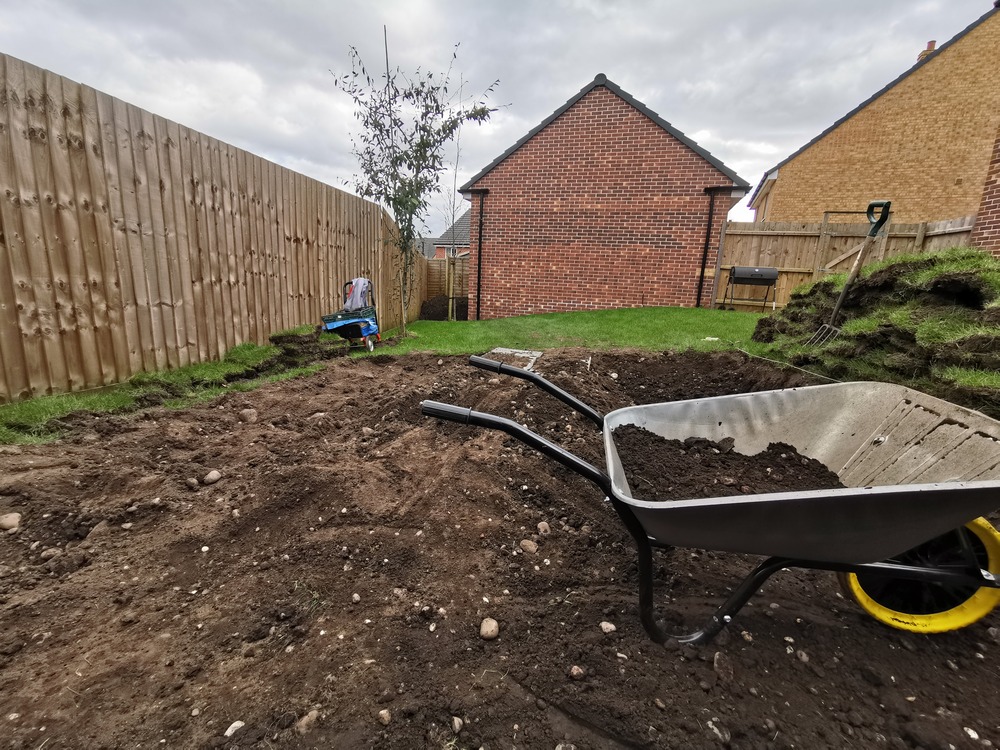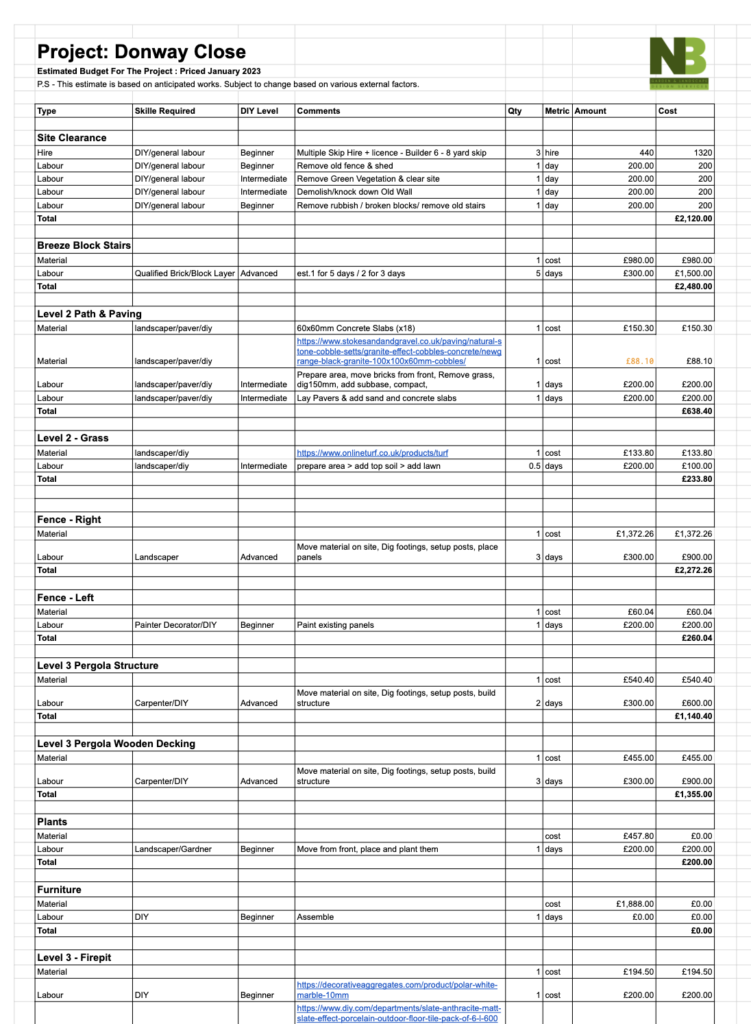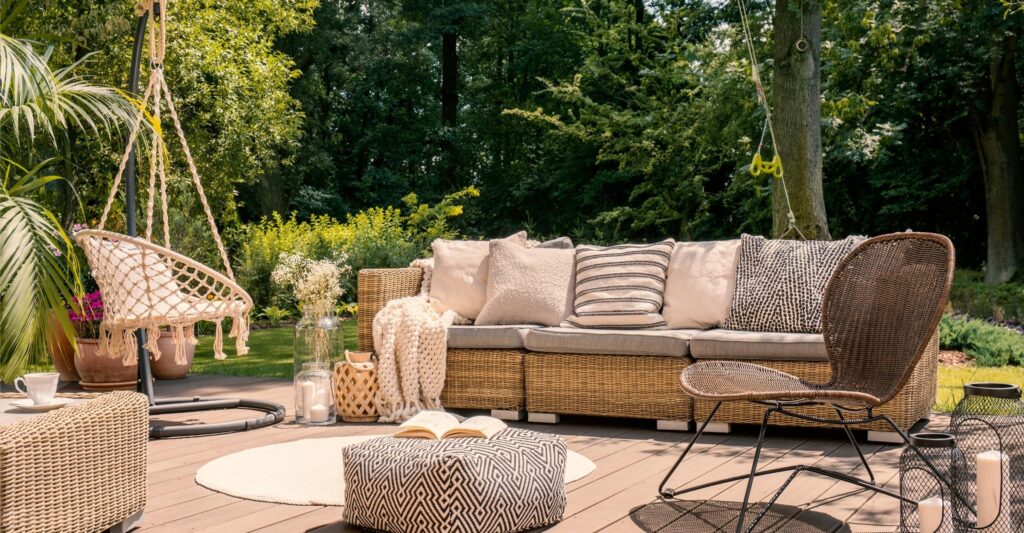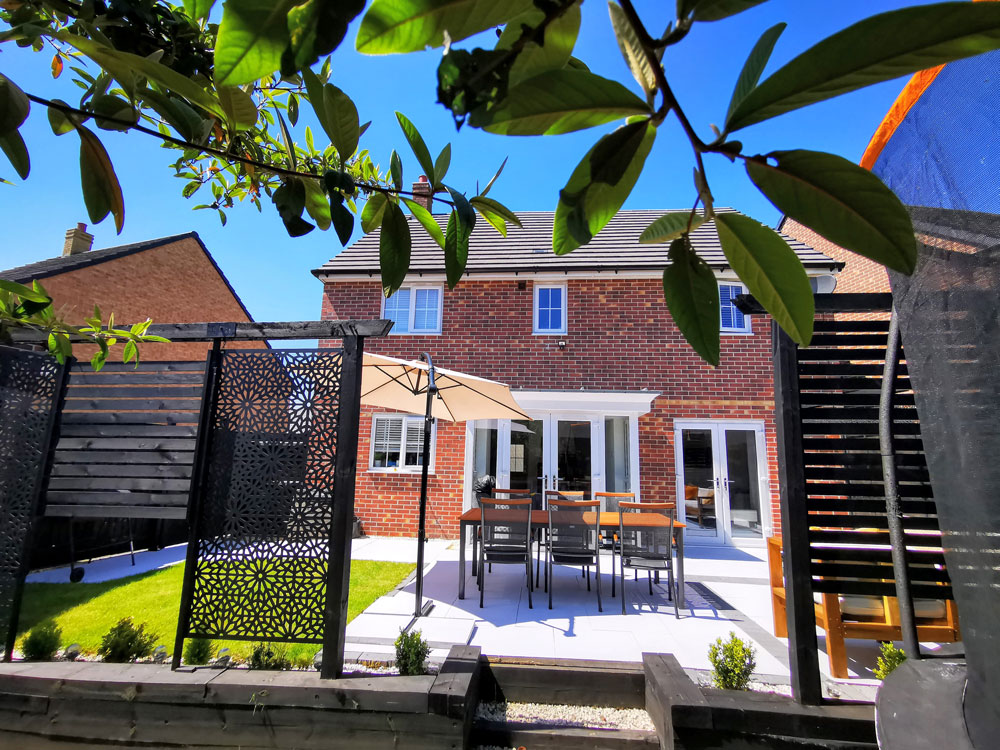5 things you need to consider before you tackle a New Build Garden.
If you’re planning on transforming your new build garden, there are a few things you’ll need to take into consideration before you get started. In this blog post, I’ll give you some tips on what to tackle first, how to save money in the process, and how to approach your design so that you can get the most out of your outdoor space.
1- Seriously Consider your needs & wants

One of the first things you’ll need to do when planning your garden transformation is to divide up the space. To do this, you’ll need to decide what areas will be allocated for planting, seating, storage, etc. To do this, you need to list out all the ways in which you plan to use your garden.
Ask yourself questions such as, who will use the garden, how often they will use it, how much maintenance you are prepared to take on and how you want the space to feel when used. Once you have a good understanding, you can begin to map out the different areas.
2 – Discover The Vibe You Are Going After

It’s time to start thinking about the design of your new build garden. This is where you’ll need to get creative and think about what you want the space to look like and how you want it to feel.
- Tip 1: Pinterest is a great place to start when looking for inspiration for your new build garden. You can search for specific items you want to include in your space or browse through general garden images to get an idea of what you like.
- Tip 2: Houzz is another great resource for finding ideas for your new build garden. You can browse through photos of gardens, find a local landscaper or gardening company, and read reviews from others who have transformed their new build gardens.
- Tip 3: When finding ideas for your new build garden, you can also look to Instagram and other social media platforms. Search hashtags such as #newbuildgarden or #gardeninspo to find images and videos that might give you some inspiration. You can also follow some of your favourite gardening bloggers or landscapers to see what they’re up to.
By the end of this exercise, you will be able to work out if you want a low-maintenance garden with artificial grass and decking. Or are you looking for a cottage garden full of flowers? Perhaps you are aiming for a more modern space with clean lines and minimal planting.
3 – Analyse Your Space & Understand Its Opportunities & Limitations

Before planning your new garden, it’s essential to take a step back and analyse your existing space. This will help you understand what elements you need to keep, what needs to be changed and what new features you would like to include.
Start by taking measurements of the area you have to work with. This will give you a good indication of the size and scale of the transformation you can undertake. Once you have your measurements, note the sun exposure in your garden. This will help you determine what plants will thrive in your space. Note down any slopes and areas where drainage is a problem.
Sadly it’s common for new build gardens to be left with soil that is of poor quality and full of builders’ rubble. This can make it challenging to grow healthy plants and achieve a beautiful garden. To create the transformation you desire, it is crucial to start with a good foundation. So make sure to check your soil quality.
4 – Work Out Who Will Be Tasked With Designing Your Garden
At this stage, you will want to consider if you should design the garden yourself or hire a garden designer or landscaper.
Hiring a Garden Designer

If you decide to hire a professional garden designer, they will work with you to create a design that meets your needs and reflects your style. A good garden designer will also be able to provide advice on the best plants for your space, how to deal with problem areas such as slopes or poor drainage, and how to create different areas within your garden.
While the initial cost of hiring a professional garden designer may be higher than doing it yourself, in the long run, you are likely to save money as they will be able to advise you on costly mistakes that could be made. Not to mention, the end result is likely to be far superior.
Designing Your Own Garden(DIY)

However, if you are adamant to do it yourself due to being on a small budget or because you are a well an able DIYer then consider taking a crash course in DIY garden design. (see one of my courses here)
If you decide to design your garden yourself, you will have full control over the final result. This can be a great way to save money as you will only need to purchase the materials that you need and can do the work yourself. However, it is important to note that designing a garden can be challenging and time-consuming. So make sure you do your research and plan carefully before getting started.
Some benefits of designing your own garden include:
- You can tailor the design to perfectly suit your needs and taste.
- You will have a unique space that reflect your personality.
- If you are on a budget, DIYing your garden can be a great way to save money.
- You can get creative and have fun with the design process.
- Doing it yourself can be a great sense of achievement.
5 – Setting Your Budget Work Out How Much You Can Take on

Once you have an idea of the scope of work required, it’s time to set your budget. This will ensure that you don’t overspend on materials or end up with a half-finished garden.
When setting your budget, it’s important to consider the cost of both the hard landscaping elements such as decking, paving, and fencing, as well as the cost of plants, compost, and other gardening supplies. It can be helpful to break your budget down into two categories: essential and non-essential. This will help you prioritise your spending and ensure that you get the most important things done first.
Some tips for setting your budget:
- Start by doing some research to get an idea of the cost of materials and labour in your area.
- Get quotes from different suppliers to compare prices.
- Be realistic about what you can achieve with your budget. It’s better to start small and gradually add to your garden over time than to try to do too much all at once and end up with an unfinished project.
- Don’t be afraid to ask for discounts or look for ways to save money, such as by buying in bulk or using recycled materials. For example, old pallets can be used to create raised beds or privacy screens. Using recycled materials not only saves you money, but it’s also better for the environment.
Bonus Tips
Whilst the following are not in the top 5 essential steps, these are additional things you’ll need to consider when designing your new build gardens.
Layout & Movement
The layout of your new build garden is important as it will dictate how the space is used. You’ll need to think about the flow of the space and how you want people to move around it.

Planting scheme
The planting scheme is another important aspect of your garden design as it will add colour, texture and interest to the space. When choosing plants, make sure to choose ones that are suited to the conditions in your garden and that will thrive in the space.
Furniture
Furniture is another important consideration for your new build garden as it will provide a place to sit, relax and enjoy the space. When choosing furniture, make sure to choose pieces that are durable and fit the style of your garden.

Lighting
Lighting is an important aspect of any garden design as it can be used to create atmosphere and ambience. When choosing lighting for your new build garden, make sure to choose products that are weatherproof and fit the style of your space.
Wildlife
If you live in an area that is home to wildlife, you may want to include some plants that will provide food and shelter for them. This can be a great way to attract birds, bees and other beneficial creatures to your garden.

Final thoughts Conclusion:
Planning your new build garden transformation can seem like a daunting task, but if you take it one step at a time, you’ll soon have the outdoor space of your dreams. By taking some time to consider what your goals for the space are and what elements you’ll need to include in order to achieve those goals, you can easily develop a plan that will ensure that your garden transformation is everything you’ve ever wanted it to be. So what are you waiting for? Get started on your garden transformation today!

